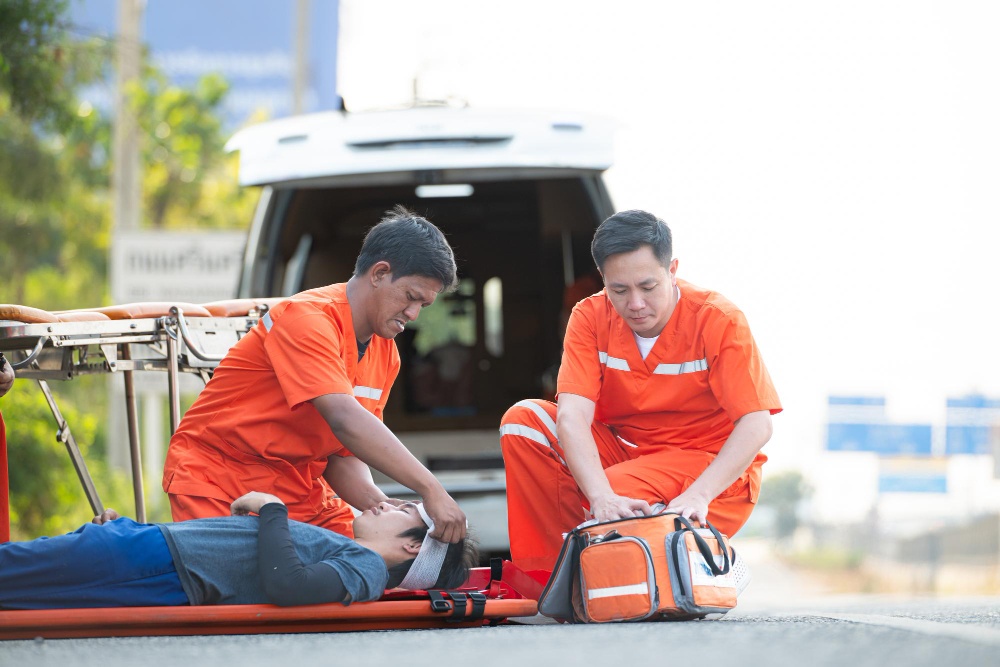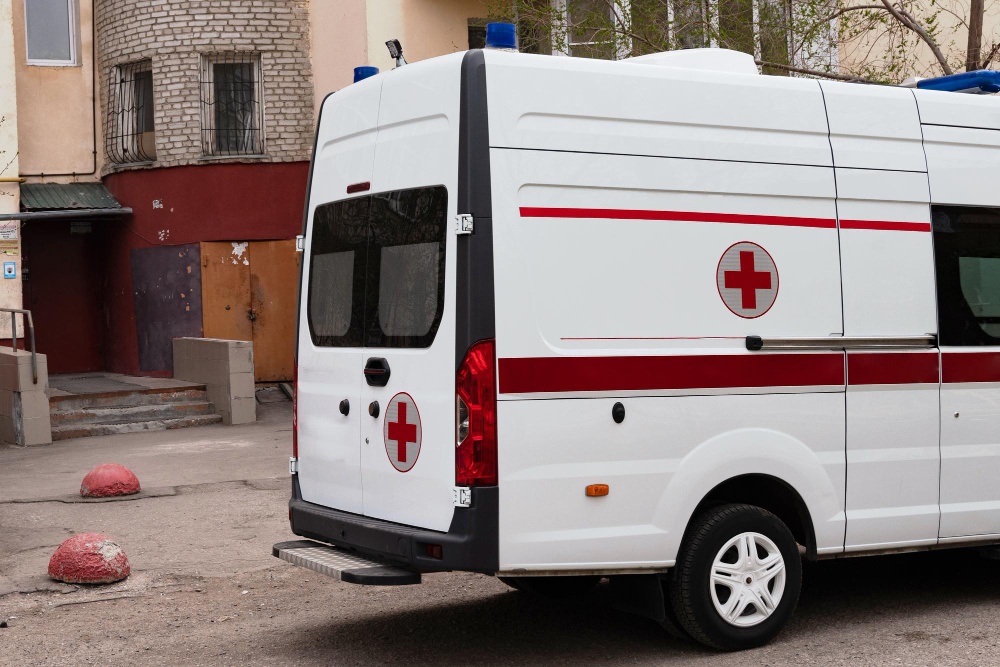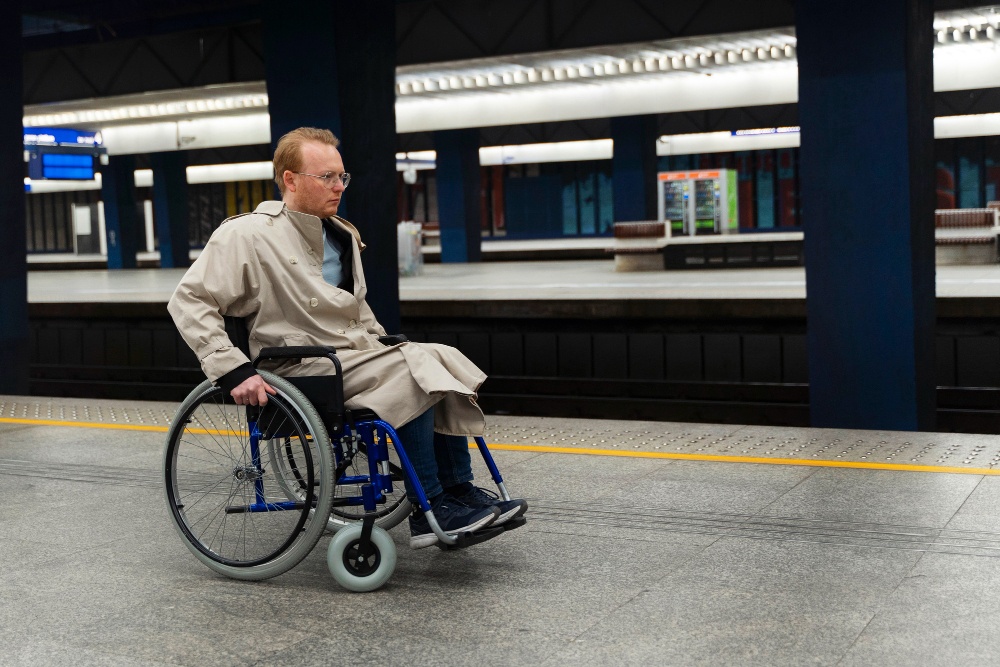Manual vs. Powered Gurney: 5 Things You Should Know
When it comes to transporting patients comfortably and safely in medical settings, few tools are as ...
Created by: Daniel Ogunsemowo /
Vetted by:
Otse Amorighoye

When it comes to transporting patients comfortably and safely in medical settings, few tools are as crucial as gurneys. Whether it’s an emergency room transfer, a ride in an ambulance, or a trip to a dialysis center, gurneys play a pivotal role in ensuring patients receive the care they need.
But did you know that not all gurneys are the same? From manual gurneys to advanced powered models, the right choice can make a huge difference for both patients and healthcare professionals. Manual and powered gurneys each have their own set of benefits, and choosing the correct one could impact factors like comfort, mobility, and even recovery.
Understanding the differences and knowing what to look for can help medical providers, caregivers, and families make informed choices that enhance patient well-being and support healthcare workers. Whether you're considering a gurney for medical transportation, a healthcare facility, or non-emergency medical transportation (NEMT) services, this guide will clarify what you need to know.
Let’s dive into the essential differences between manual and powered gurneys, so you can decide which option is best for your needs.
Overview of Gurneys and Their Importance in Medical Transportation
Gurneys, also known as stretchers or patient transport beds, are essential tools in healthcare settings. From moving patients within hospitals to transporting individuals in ambulances and NEMT vehicles, gurneys ensure patients are transported safely, efficiently, and comfortably. They come in different forms, with unique functionalities that cater to various medical situations. The right gurney type can ease patient movement, reduce physical strain on healthcare providers, and improve overall efficiency in patient care.
What is a Gurney?
Definition and Function of a Gurney in Medical Settings
A gurney is a mobile patient bed with wheels and typically includes safety straps, headrests, and adjustable frames. In hospitals, gurneys are used to transport patients who may not be able to move on their own. In ambulances, they are vital for transferring patients from accident sites or homes to medical facilities. In NEMT services, gurneys provide a way to transport individuals who need medical support without an emergency response.
Different Types of Gurneys and Their Common Uses
Hospital Gurneys: Primarily used in hospitals to move patients within the facility.
Ambulance Gurneys: Designed to safely transport patients from the scene to the hospital.
NEMT Gurneys: Specifically for transporting individuals to non-emergency medical appointments like dialysis or physical therapy.
Each type of gurney has specific features tailored to its function, including weight capacity, mobility, and additional support systems like hydraulic lifts for powered gurneys.
Manual Gurneys
Features and Benefits of Manual Gurneys
Manual gurneys rely on the physical effort of healthcare workers to move and lift patients. They are lightweight, easy to maneuver, and can be used in almost any medical setting. Some key features of manual gurneys include:
Simplicity: Without electronic or motorized components, manual gurneys are easier to maintain and are less likely to require repairs.
Lightweight Design: Generally lighter than powered models, making them easy to transport and maneuver in tight spaces.
Cost-Effectiveness: Manual gurneys are often more affordable, making them a practical option for many medical facilities.
Limitations of Manual Gurneys
However, manual gurneys require considerable physical effort, which can be challenging, especially for larger patients or when lifting over extended periods. Additionally, they may be less comfortable for patients in need of highly stable and secure transportation.
Powered Gurneys
Features and Benefits of Powered Gurneys
Powered gurneys utilize batteries or motors to assist in patient transport, allowing for easy lifting and maneuvering with minimal physical effort. They are particularly advantageous in settings that require frequent or long-distance patient movement, such as in ambulances or large hospitals.
Key features of powered gurneys include:
Ease of Use: With powered lifts, healthcare workers can move patients with minimal strain.
Stability and Comfort: Powered gurneys provide a stable ride, reducing jostling for patients with critical or sensitive conditions.
Enhanced Safety Features: Many powered gurneys come with advanced safety features like automatic locking mechanisms.
Limitations of Powered Gurneys
Despite their advantages, powered gurneys tend to be more expensive, require regular maintenance, and are heavier, making them challenging to maneuver in smaller spaces.
Comparison of Manual and Powered Gurneys
Mobility and Maneuverability
Manual Gurneys: Lightweight and easy to move in confined spaces but may require significant effort.
Powered Gurneys: Motorized for smoother, less labor-intensive movement, though bulkier.
Cost Considerations
Manual Gurneys: Generally more affordable, with lower maintenance costs.
Powered Gurneys: Higher upfront costs and maintenance requirements but can save labor over time.
Safety and Comfort
Manual Gurneys: Suitable for short transfers but may not provide the same stability as powered gurneys.
Powered Gurneys: Offer greater patient comfort and safety, especially over longer transport distances.
Choose the Right Gurney with DreamCareRides
At DreamCareRides, we understand that patient safety and comfort are top priorities. Whether you're a caregiver, a healthcare provider, or someone seeking reliable non-emergency transportation, we can help you choose the best option. Our range of services includes expert guidance and comfortable, safe transport for patients in need of NEMT services. Contact us today to learn more about how we can assist with your specific medical transportation needs.
Conclusion
When choosing between manual and powered gurneys, it’s essential to consider the specific requirements of the patient and the transport environment. While manual gurneys are cost-effective and straightforward, powered gurneys provide enhanced comfort and ease for both patients and caregivers. Both types have their benefits and limitations, but with the right choice, patient care and transportation can be safe, efficient, and comfortable.
Contact DreamCareRides Today
For those in the Chicago area, DreamCareRides offers reliable non-emergency transportation services that prioritize comfort, safety, and convenience. Contact us today to learn more about how our services can meet your NEMT needs.
FAQs
1. What is the primary difference between manual and powered gurneys?
Manual gurneys rely on physical effort, whereas powered gurneys use motorized components to assist with lifting and movement, offering more stability and ease.
2. Are powered gurneys more comfortable for patients?
Yes, powered gurneys provide a smoother ride, which can enhance comfort for patients who may be sensitive to movement.
3. Do powered gurneys require regular maintenance?
Powered gurneys often need regular maintenance to ensure the motor and battery function correctly, which can add to long-term costs.
4. Which type of gurney is best for NEMT services?
It depends on the patient's needs. Powered gurneys are better for patients requiring extra stability, while manual gurneys are sufficient for shorter, less complex transfers.
5. Can manual gurneys be used in ambulances?
Yes, manual gurneys are often used in ambulances due to their lightweight design and ease of maneuverability in tight spaces. However, powered gurneys are increasingly preferred for added safety.
Choosing the right gurney is critical to patient comfort and safety. For more information about NEMT options in Chicago, DreamCareRides is here to provide expert guidance and reliable transportation services.
Related ArticlesTop NEMT Services for Outpatient Surgery Patients: DreamCareRides
Non-Emergency Medical Transportation Services: What Caregivers Need to Know
Non-Emergency Medical Transportation During and Post-COVID-19: Adapting to New Norms
Top 5 Essential Non-Emergency Medical Transportation (NEMT) Services You Should Consider
How Reliable Transportation Can Enhance Patient Experiences in Hospital Care
Top NEMT Services for Outpatient Surgery Patients: DreamCareRides
Non-Emergency Medical Transportation Services: What Caregivers Need to Know
Non-Emergency Medical Transportation During and Post-COVID-19: Adapting to New Norms
Top 5 Essential Non-Emergency Medical Transportation (NEMT) Services You Should Consider
How Reliable Transportation Can Enhance Patient Experiences in Hospital Care
Recent blog posts

Daniel Ogunsemowo
Nov 08, 2024
Medical Transportation
7 Things to Consider Before Booking NEMT for Dialysis Appointments
When it comes to dialysis treatment, transportation is essential. ...

Daniel Ogunsemowo
Nov 08, 2024
Medical Transportation
How NEMT Supports Post-Surgery Care
Post-surgery recovery often demands strict adherence to healthcare schedules for follow-up visits, p ...

Daniel Ogunsemowo
Nov 07, 2024
Medical Transportation
10 Illinois Medicaid Transportation Providers: Top Choices for NEMT Services
In Illinois, access to healthcare depends on the availability of reliable transportation for Medicai ...

Adeshola Bello
Nov 04, 2024
Medical Transportation
Essential Airport Transportation Tips for Disabled Travelers
Traveling can be an exciting adventure, but for disabled travelers, it often comes with unique chall ...

Daniel Ogunsemowo
Nov 04, 2024
Medical Transportation
Ensuring On-Time Medical Appointments for Chicago Patients with DreamCareRides
Every year, thousands of Chicago patients face the challenge of reaching their medical appointments ...

Daniel Ogunsemowo
Nov 04, 2024
Medical Transportation
10 Meaningful Ways to Spend Quality Time with Your Grandparents During Christmas
The holiday season is the perfect time to create lasting memories with your loved ones, especially g ...